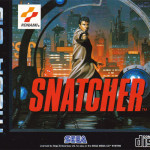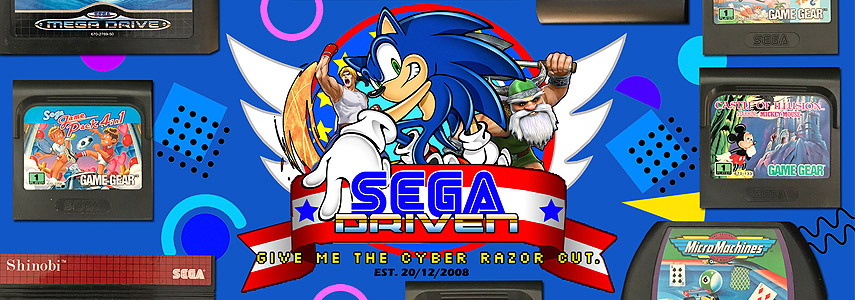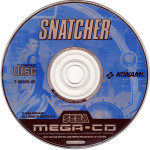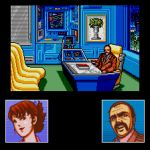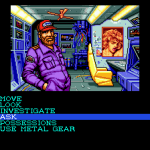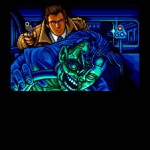Snatcher Review
Snatcher is a very special game and not just because buying a copy off an auction website will set you back over one hundred pounds. Snatcher is notable for marking Hideo Kojima’s second credit as the director of a video game and the Mega-CD version is the only time the game has been translated into English. This is why it’s become such a sought after item for both fans of Kojima and Mega-CD collectors.
Not only is the game notable for its connection to one of gaming’s greatest icons and its rarity, it’s also a rather spectacular experience that still feels incredibly original even now. The game puts you in the shoes of Gillian Seed, a “Junker” (essentially a private eye in the future) who is newly assigned to Neo Kobe’s Junker headquarters as their lead detective on a case that involves you finding another missing Junker. You are assigned a robotic assistant called Metal Gear Mk. II and it’s up to you to as the player to investigate these mysterious circumstances and find the missing Junker.
The game is a strange mix of adventure game and visual novel. You control your actions via menu prompts such as Move, Look, Investigate, Talk and Listen. These prompts allow you to assess your surroundings and piece together evidence that eventually leads to your success. The on-screen action is a blend of cinematic cut-scenes and traditional written text that describes your actions as well as providing subtitles for the character’s dialogue.
Speaking of dialogue, the game’s plot is wonderfully written and forms the game’s centrepiece. Gillian’s investigations and the revelations they uncover will keep you glued to your screen for the entirety of the game. Kojima has done a wonderful job of creating a believable game world that feels like it was plucked straight out of Bladerunner and he’s filled it with engaging and beautifully executed characters that you actually care about. Sure, the voice acting is a bit ropey in places which makes the drama fall a little flat, but the outstanding writing generally elevates the experience to a point where you don’t really notice it.
What also helps draw the player into Neo Kobe is the rather fantastic artwork. The game blends together detailed landscapes with talking heads and a few animated sequences to create a game world that feels like it truly exists. Neo Kobe has a real sense of place that makes it a joy to explore. From the Junker HQ to shopping districts, slums, seedy nightclubs and stately homes, Neo Kobe genuinely feels like a real place that real people occupy. It’s amazing that Kojima was able to realise such a detailed and convincing game world in 1988.
Also helping the overall tone of the game is the soundtrack. While the game doesn’t really contain anything we’d describe as thematic, the incidental music does help create an atmosphere that perfectly matches the on-screen action. For slower-paced investigation the soundtrack switches to some very sparse instrumentation and when the action picks up the soundtrack also adjusts to a more energetic composition. The soundtrack always delivers the right vibe for the circumstances.
Overall Snatcher is an absolute joy to play. The wonderful blend of detailed environments, memorable characters and brilliant writing create an experience that feels like you’ve actually taken part in it personally. The twists and turns of the game’s plot will have you gripped throughout and the game even manages to sneak in some cheeky self-references and humour that you can unlock if you keep an eye out for phone numbers on various advertisements. Snatcher might fetch a pretty penny nowadays, but it’s a game that deserves to be played by anyone who’s ever remotely cared about video games. As for Mega-CD owners, Snatcher is a no-brainer.
10/10
Written by Lewis “Sonic Yoda” Clark on 09/01/2015
